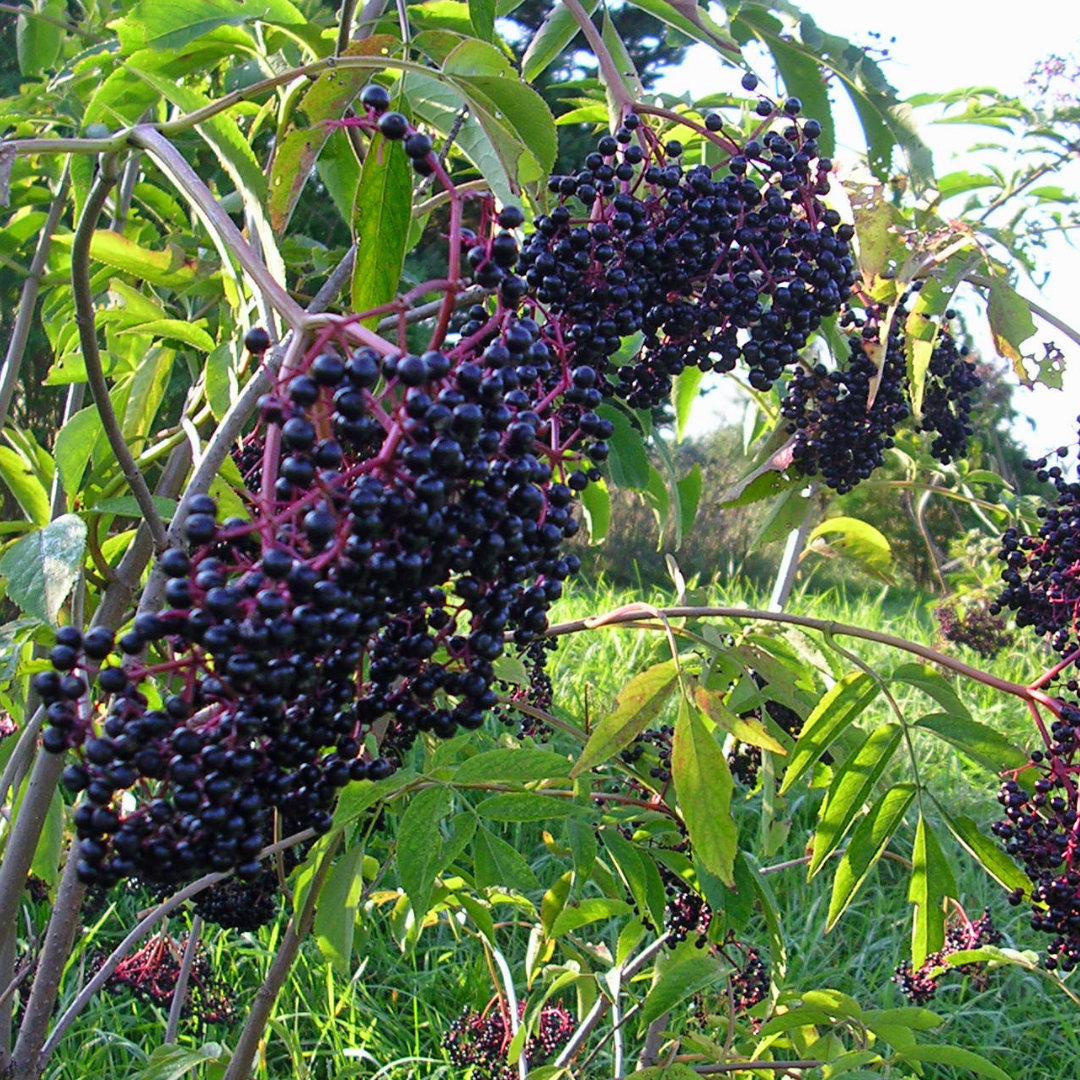forestag
Elderberry (Sambucus canadensis)
Elderberry (Sambucus canadensis)
Couldn't load pickup availability
Share
The Elderberry (Sambucus canadensis) is a medium-sized shrub, known for its large clusters of tiny white flowers that bloom in early summer. This hardy plant is well-adapted to avoid frost damage, a common issue for many fruit-bearing plants, ensuring a reliable harvest.
Following the flowering period, elderberry produces dark purple berries that are not only visually striking but also packed with antioxidants, particularly anthocyanins, which give the berries their rich color and contribute to their health benefits.
Elderberries thrive in riparian areas and mesic forest-edge habitats, making them an excellent choice for natural landscaping and agroforestry systems. They can play a vital role in supporting local ecosystems while providing delicious and nutritious fruits.
Plant Characteristics:
- Scientific Name: Sambucus canadensis
- Size & Shape: Grows up to 10 feet tall with a bushy, spreading form; ideal for hedgerows and natural landscaping.
- Fruit Type: Dark purple berries that grow in large clusters, rich in antioxidants.
- Flowering: Produces large clusters of tiny white flowers in early summer, attracting pollinators.
- Ecological Benefits: Supports biodiversity by providing food and habitat for wildlife; enhances soil health in riparian and forest-edge ecosystems.
- Wildlife Benefits: Berries serve as a nutritious food source for birds, small mammals, and other wildlife.
Growing Conditions:
- Sun Requirement: Prefers full sun to partial shade; optimal flowering and fruit production occur in sunny locations.
- Water Requirement: Moderate water needs; appreciates consistent moisture, particularly in riparian zones.
- Hardiness Zone: Zones 3-9.
- Soil Preference: Thrives in rich, well-drained soils but can adapt to various soil types.
Incorporating elderberries into your landscape not only provides delicious, antioxidant-rich fruits but also enhances the ecological value of your garden. These versatile shrubs are perfect for agroforestry projects and natural landscaping, offering both aesthetic appeal and a sustainable source of nutritious berries while supporting local wildlife and biodiversity






